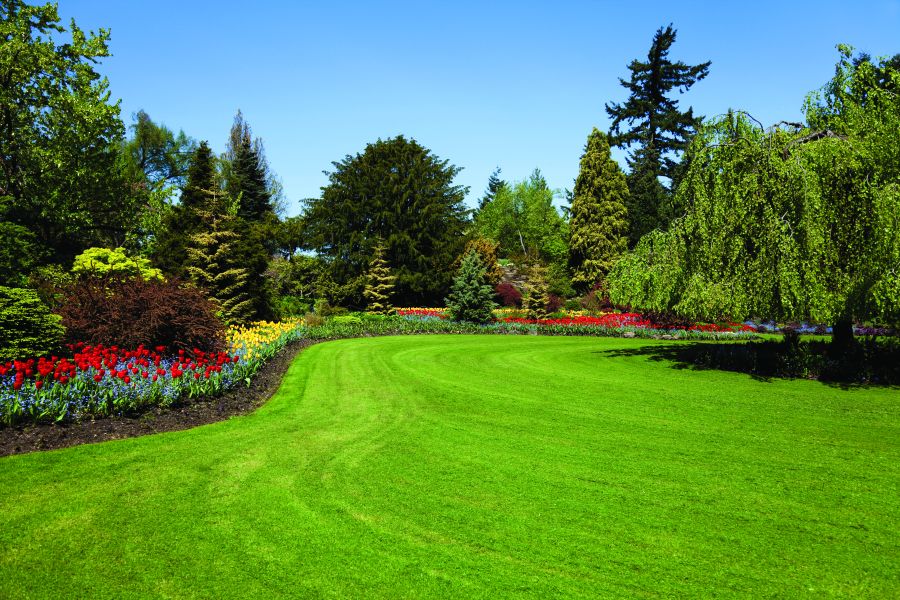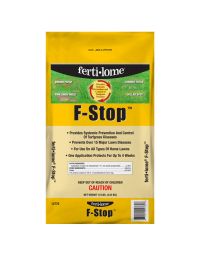Summer Patch is a lawn disease that is active during the summer when turfgrass roots are growing very slowly.
Symptoms:
- Blade color change from a healthy green to tan-brown, often with a reddish color as they die.
- This reddish color is an early symptom of something more severe and often only appears after a small area of grass has died.
- The dead areas usually appear in rings or circular patches.
The fungi in the soil that causes this favors wet soil conditions in spring and fall and higher temperatures in summer.
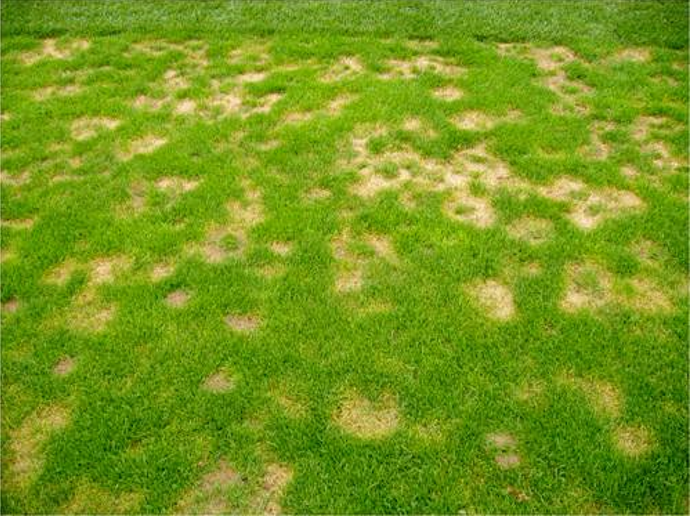
Summer patch particularly attacks fine fescue grasses photo by msu.turf.edu
What and why of the attacking fungi:
- This disease attacks grass root systems and crowns resulting in dark colored, rotted roots and crowns.
- Spread of the fungi is favored by thick lawns with more fine fescue mixes and will easily grow along root systems spreading into the crown.
- Wet periods followed by dry conditions can bring on severe symptoms.
- Affected lawns will often die during even slight dry periods since they have no root system to support them.
- The conditions of the soil in your yard can contribute, compacted soils delay or prevent the establishment of root growth into the existing soil and the turf is weakened as a result of slow water logging and an increase in thatch build up. Even if you have an inch or two of topsoil it can cause many of the same affects because of soil compaction.
Soil prep should include working any topsoil into the existing soil; this helps to create a more uniform, deeper root zone and adds more organic matter as well as helps relieve soil compaction.
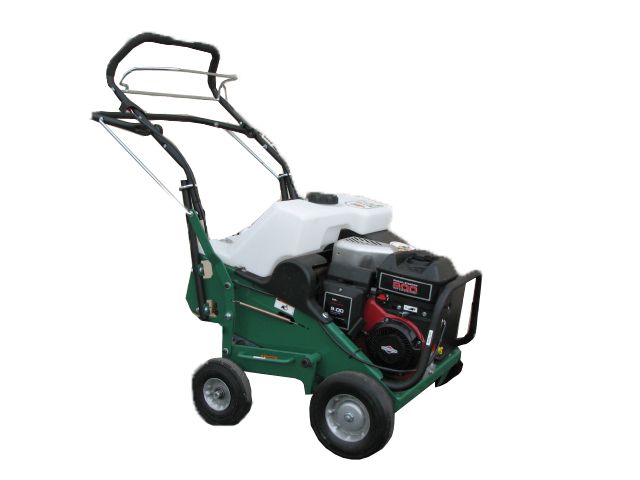
Billy Goat AE401 Aerator from Gertens
Thatch Management:
Thatch is a layer of partially decomposed grass. It is on top of the soil and below the blades of grass. It is a natural development of healthy, vigorous turf, but...
- Layers greater than ½ inch can cause problems.
- An excessive layer of thatch will inhibit root growth deeper into the soil which limits access to water as well as other nutrients.
- The thatch layer can be a location for the fungi to live, overwinter and grow and attack the turf.
- One of the main practices for reducing thatch is aeration; spring and late summer are good times to reduce thatch.
- If your lawn is severely thatched it can treated at any time.
- Aeration removes less thatch directly but speeds up decomposition by bringing soil and thatch directly into contact.
- Aeration also helps to reduce soil compaction and increase water and nutrient saturation as well as helps to stimulate root development.
Note: If you have heavy clay soil or clay loam soil regular aeration is necessary to prevent your soil from becoming compacted.
Fertilization and Watering:
- When the weather is hot and/or in spring avoid excess use of nitrogen Nitrogen is meant for foliage growth, with Summer Patch, there are not enough roots to support that growth and you can kill whatever’s left.
- Proper watering is critical.
- Frequent light watering to keep the top ½” to 2” of soil moist.
- As the lawn begins to recover, gradually lengthen the time between watering and apply more water each time until back to a normal watering program.
- Watering during the heat of the day is not harmful and even required for cooling the lawn, preventing water stress and associated patch symptom development.
Mowing:
- Mowing heights should be adjusted higher during the recovery period.
- This will allow the potential for greater rooting depth and consequently more soil volume from which roots can draw moisture and nutrients.
- Removing about 1” of the grass height at any one time will help minimize plant stress.
Overseeding:
Overseeding an existing lawn is usually of limited value. However, if you choose to overseed follow our Gerten Experts instructions on Overseeding Your Lawn. Two important elements are top dressing and core aeration which increases seed to soil contact.
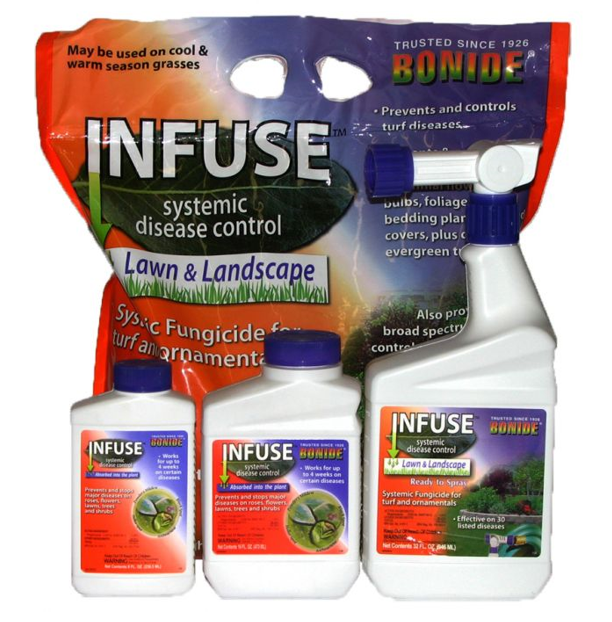
Fungicides:
Preventative fungicide application to sites with a history of disease can be effective.
- Apply the first application mid-April to Early May
- Repeat applications (one or two) at 3-to-4-week intervals.
Two effect options include Bonide Infuse (either in liquid or granular form) as well as Fertilome F-Stop granules will help.
*Some information taken from Michigan State University and the University of Minnesota
The experts at Gertens are always available to answer your questions!

